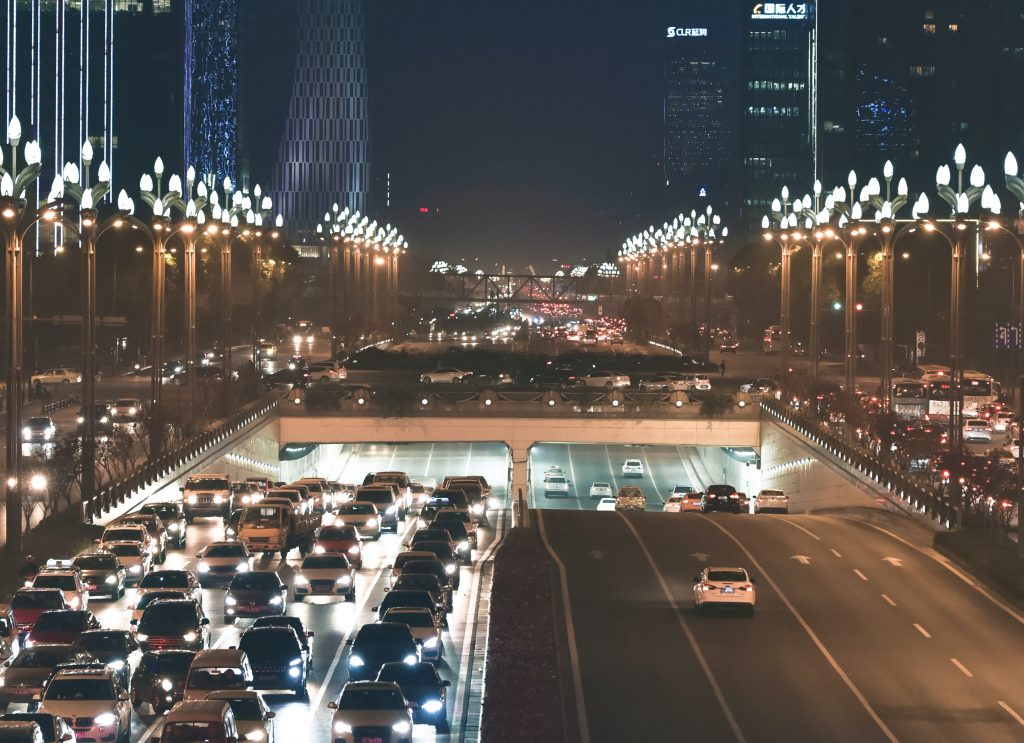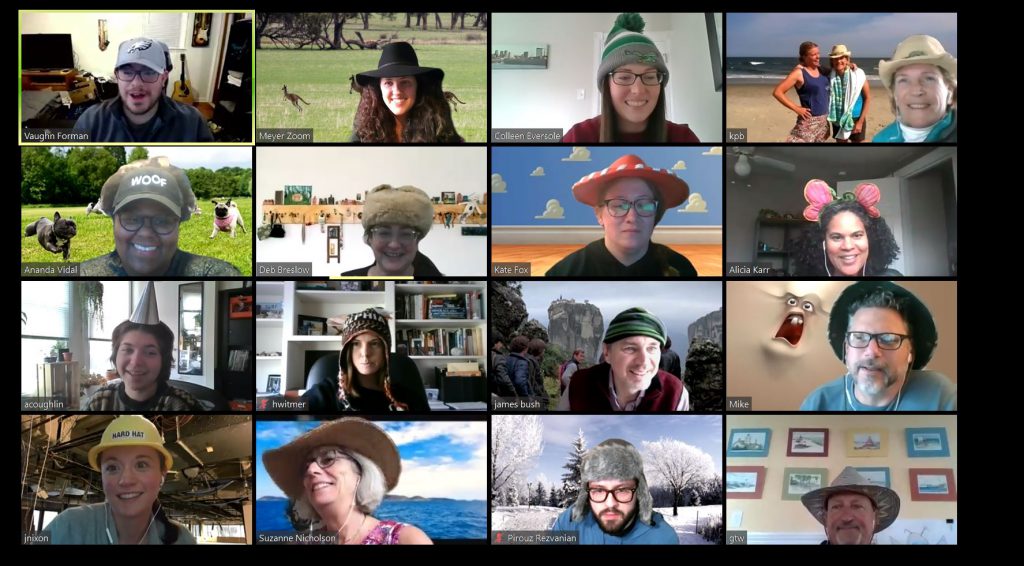 I miss traffic jams. Especially the ones sprinkled in with a punch of thunderous car horns and a fistful of harmonic howls from fellow time-starved drivers. And while traffic jams surely suck the living will out of our souls, they unintentionally provide a pinch of respite within the daily chaos of routine.
I miss traffic jams. Especially the ones sprinkled in with a punch of thunderous car horns and a fistful of harmonic howls from fellow time-starved drivers. And while traffic jams surely suck the living will out of our souls, they unintentionally provide a pinch of respite within the daily chaos of routine.
Perhaps it is the monotony of sitting in the car, socially distancing before social distancing was a thing. I tuned into and out of whatever the latest Philly sports drama flooded the airwaves, only to delay the stark realization that—in the end—it still sucked (the traffic, not the sports…mostly). But looking back, the extra time served a purpose—a gift of the moment to decompress in a compressing world that we didn’t know we needed or, in my case, wanted.
Fast forward to our newly adopted COVID-commute that transports us from the living room, around the bend to the downtown of the kitchen, all sandwiched between too much screen time and way too much screen time. A recent study shows that excessive screen time causes obesity, lack of sleep and coincidentally, a hankering desire for traffic jams.
I miss traffic jams so much that I now find myself driving around on the weekends with my family for no precise reason other than to just aimlessly drive around in search of the simplicity for scenery change. If we are feeling extra lucky, we just might find ourselves at the tail end of a mini-traffic jam—because in an absurd way, it serves as a minor reassurance that people are out and about, latching onto any identity of normal. A normal where we are all clenching for a unified, primal desire for a non-virtualized Starbucks drivethru social connection.

At this point, canyons full of articles and webinars aiming to check the what-to-do-box for you are all flooding the daily inboxes. Don’t get me wrong, they are all good and all for the benefit of consumption for the responsible citizen in us, but admittedly, it is challenging to not become a bit desensitized to all the words being propelled around—it’s an absolute drenching of information drowning. All virtually compressed and all coming at once where we can only hope the thick waters might recede just fast enough that our screen-no-tized eyes can have a chance to healthfully digest.
Today, we are in the guts of a 5th week in the new world—just in time for another webinar and maybe even a newly minted bad haircut. (I’m suddenly wearing a hat right now, by the way). Ideally, we have found a comfort of relative virtual rhythm. In sports, this is the time they often say the game has slowed down a bit—meaning we are at a point in the COVID reality where reacting turns into pro-acting, and THAT is a good thing.
Look—I get it—none of us have never-ever done this before…and so what do we do? We write about it in blogs, read about it from articles and listen to it on webinars, but the concept of actually entering back into the bowels of an active pandemic suddenly slingshots us back to a realm of uncertainty and anxiety, yanking the flesh of a five week old emotional scab. A true reality that I’m not sure all of us are prepared to do before truly coming to grips with our own personal threshold for comfort. Frankly, this is all a bit scary and so welcome to… (drumroll please)
The Re-entry
To be honest—this will likely look much different for everyone—just like it NOW looks much different for everyone. We are all trying to figure this out and all doing the absolute best in our newly compressed “3-days” (yesterday, today and the tomorrows). As our regions, states and townships all debate the introduction of when we might re-enter back into the world, we can agree it will assuredly be different and perfectly intimidating for all of us.
Here at Meyer, our leadership continues to be churning forward, doing what they do best – seeing around the corners and proactively preparing for the day, THAT day when we can all return to some resemblance of normal. It’s a watershed moment, really, especially when we are reminded of a mere five weeks ago, we were suffocating under the what-just-happened-world.
Below is a short outline summarizing the recommendations we are sharing with our clients in approaching the upcoming re-entry phase. To be honest, nothing below is new, novel or frankly all that exciting yet the guidelines of how we go about re-entering in a COVID-world could and should fall on the safe side of remarkably boring. The mission is to bring everyone back safely, with health and well-being fully intact, period.
1 Follow the rules – obviously, but it is crucial that we all follow the CDC provided guidelines and maintain the guidelines of social distancing and effective quarantining.
2 Flexibility in the Workplace – Rethinking what “Communal” means
- Training staff on re-entry expectations (8/10 are fearful of returning to workplace without a cure)
- Evaluating building re-entry (adjust timing, sanitization, capacity, etc.)
- Allow for greater flexibility and optimized for resiliency
- Remove chairs at collaboration tables in conference rooms and public spaces to maximize personal space
- Consideration for going to a four-day work week and staggering teams across five days to reduce density by up to 20 percent on any given day
- Transition to unassigned seating that would allow people to establish their own personal boundaries while enabling social distancing
- Assign private lockers / bins for people to store personal items
- Reorient workstations so individuals may avoid a direct access from across each other
- Introduce voice activation or hands-free controls to minimize the need to contact commonly touched items
- Remove trash cans from individual desks and replace them with a communal location that consolidates sanitation
- Create updated clean desk policies that allow surfaces to be properly cleaned daily and update facility maintenance contracts to ensure these steps are taken
3 Focus on Health and Wellness of the Individual
- Emphasizing that the ultimate decision maker is and should be the Individual
- Realizing that anxiety rules the day and to provide an open and accessible platform for listening and sharing concerns
- Implement the WELL Building Standard core principles
4 Focus on the Health and Wellness of the Workplace
- Implement the WELL Building Standard core principles (say it again!)
- Establish regular screening protocols and fever checks for everyone entering the workplace
- Increase humidity levels to 40 to 60 percent to reduce infection. Use portable humidifiers if the HVAC system does not allow for this
- Coordinate with building management to improve air circulation, filtration and ventilation and confirm cleaning protocols
Like everyone else, I’m genuinely looking forward to coming back. I’m beginning to develop a terrible allergy to screen-time-itis. And while the daily smorgasbord of virtual happy hours and topical round tables can supplement and help fill in a few of our social voids, it certainly doesn’t replace the in-betweens and the spontaneity of the good-ol’ pre-COVID days.
Here is what I do know.
It is what you do now as an organization that forges the future of your culture. And what you don’t want to do is translate social distancing into workplace distancing.
We have found in designing workplace is that what is often BEST in defining culture is captured within the liquidity of the adapting moments, all happening within and outside the confines of any formality of a workplace strategy. It is the adaptability over time that separates true culture from just a group of people who simply share the same business card.
In the end, this will be a bona-fide team effort of respective building owners, tenants, employees, employers and the government. Every one of them to every one of us will all play a crucial part in assuring that this re-entry will be our last.
#goawaycovid

Photography Credits: